Hogweed / Spring / Summer / Autumn / Edible
Common Hogweed doesn’t sound like an edible plant, but it is and it’s one of my favourites!
Common Names
Hogweed, Cow parsnip
Botanical Name
Heracleum Sphondylium
Scientific Classification
Kingdom – Plantae
Order –Apiales
Family – Apiaceae
Physical Characteristics of Common Hogweed
Hogweed is a herbaceous perennial or biennial plant that can grow from 50-120cms in height.
Leaves
The leaves can reach a length of 55cms in length, they are very pinnate, hairy, and serrated, they are divided into 3-5 lobed sections, the edges are typically round, unlike Giant Hogweed which are always extremely pointed.
Flowers
Hogweed has white to pinkish flowers, displayed in large umbels (umbrella looking) up to 25cms, each containing 15-30 individual flowers, these individual flowers contain 5 petals.
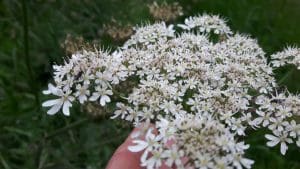
Seeds
The seeds are winged and flattened contained in stripey pods with rounded edges, up to 1cm long.
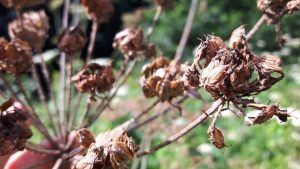
Stem
The main stem rises from a large reddish rhizomatous root, it is striated or ribbed, hollow, and has bristly hairs all over.
Common Hogweed Foraging Video
Habitat
These plants grow all over Europe, except Iceland, North Africa and all over America and Asia.
Hogweed prefers nitrogen-rich soils and grows well up to an altitude of 2500m, it can be found on roadsides, banks, hedgerows, borders, disused, and wasteland.
Known Hazards
A mild case of photo-phyto-dermatitis can be caused by touching the raw juice of this plant and, leaving the exposed skin in the sun will cause the area to blister. Wear gloves if picking, if juice goes on you, keep that area of skin covered and out of direct sunlight until you can wash it off
Could Be Confused With
Giant Hogweed (Heracleum mantegazzianum), is a lot larger than Common Hogweed, the leaves are not furry but a lot more pointy at the edges, and you can typically see the remnants of last year’s growth from the huge canes (6-10ft) that will be leftover.
Edible Use
Root: edible, grated, Lacto fermented, alcohol infusions
Stem: steamed, chopped in salads, battered, fried, on pizzas and omelettes
Leaves: soups, dried as a seasoning
Fruit/seeds: as cardamom in cakes, cookies, shortbread, chutney, rice, curries, as a celery salt, infused with alcohol.
Click here to see some of our favourite Hogweed recipes.
Notes on Herbal uses
It’s referenced that the seeds have been used medicinally in the past, being heated in oil and applied to the skin for shingles; also a decoction of the seeds was to be used for aiding a running ear.
Extra notes from the Foragers
When all of the smaller leaves have grown, you often get new shoots appearing halfway up previously growing shafts, they can be found either in or emerging from paper-looking sheaths, these can be used exactly the same as the really young shoots.
Personally, I never wear gloves when picking this plant, of course, I don’t purposefully rub the juice on myself but I’ve never had an issue with the juice. If you plan to collect a lot of Hogweeds on a sunny day, wearing gloves, maybe marigolds, would be a safe bet, but don’t worry yourself too much.



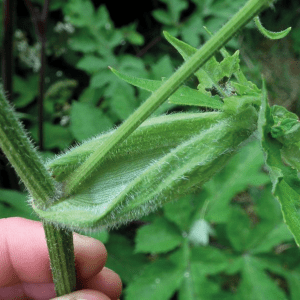
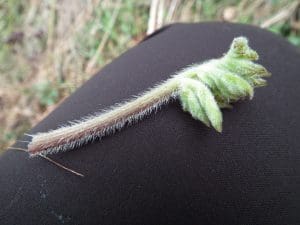
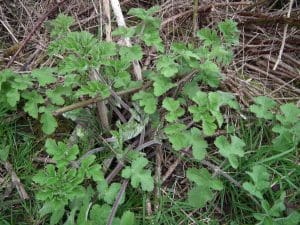
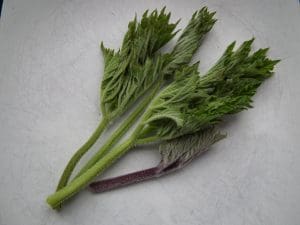

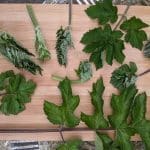
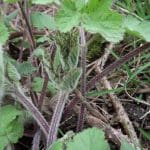
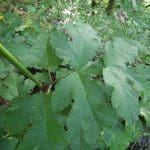




1 reply on “Common Hogweed (Heracleum Sphondylium) Identification”